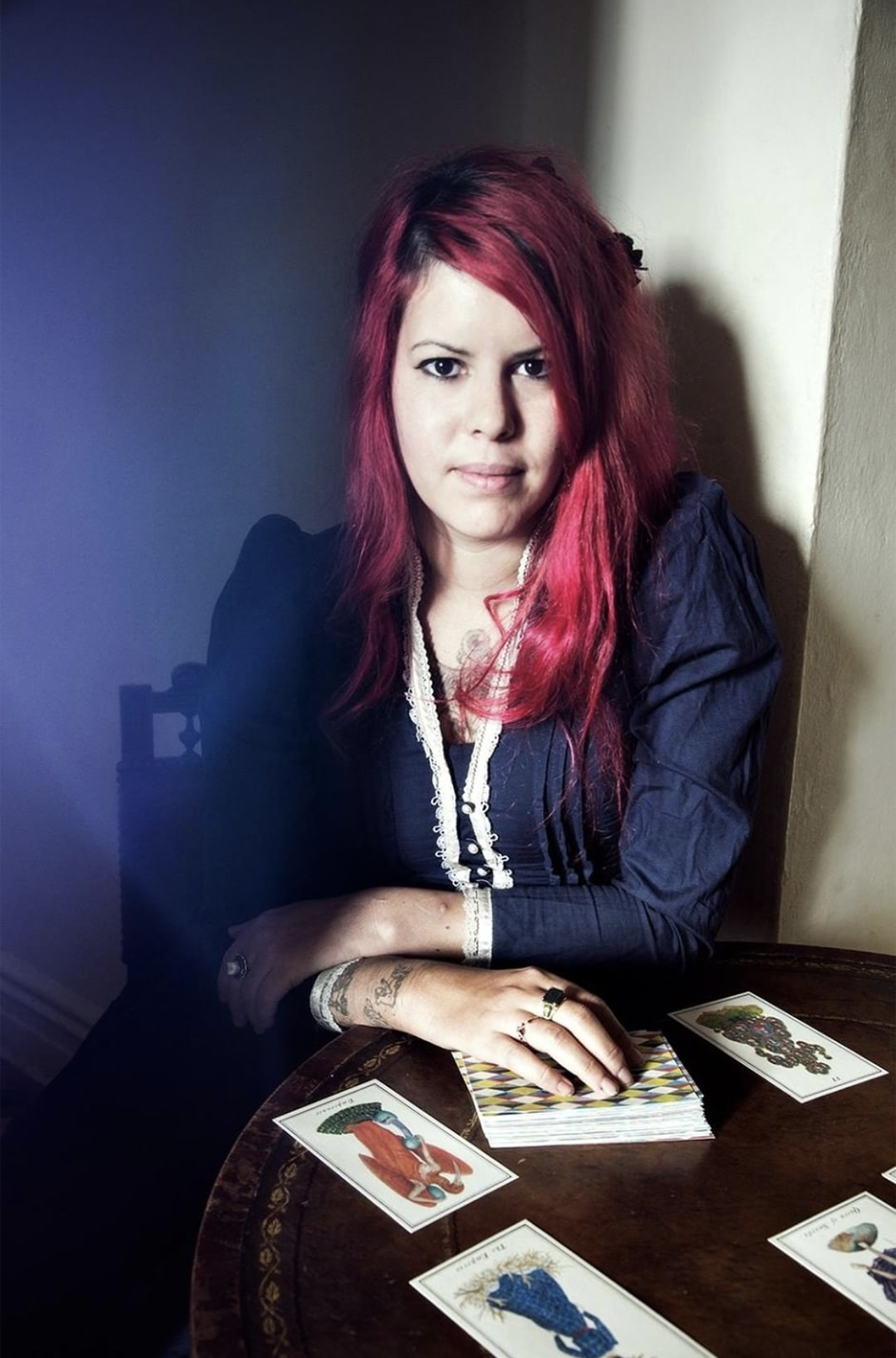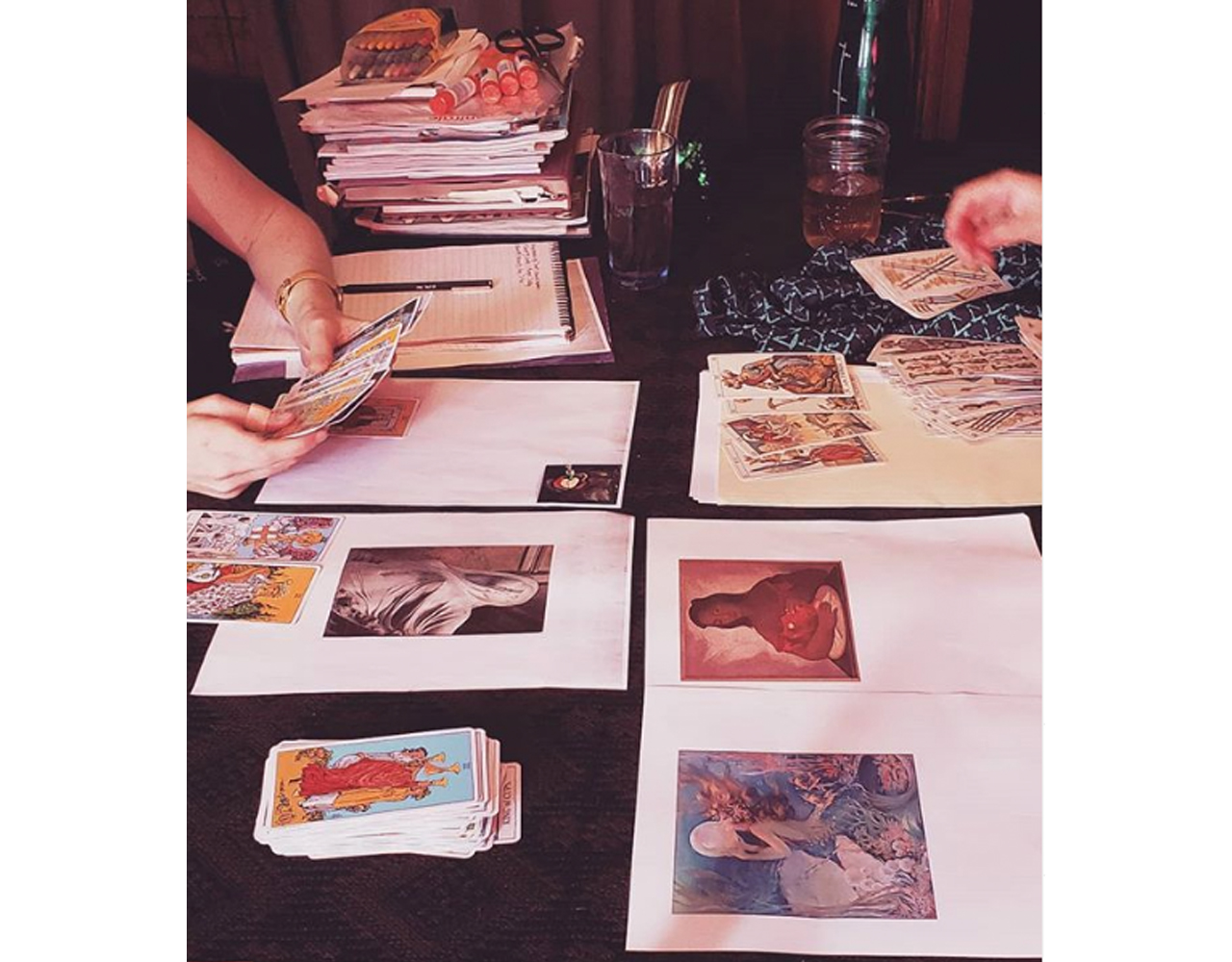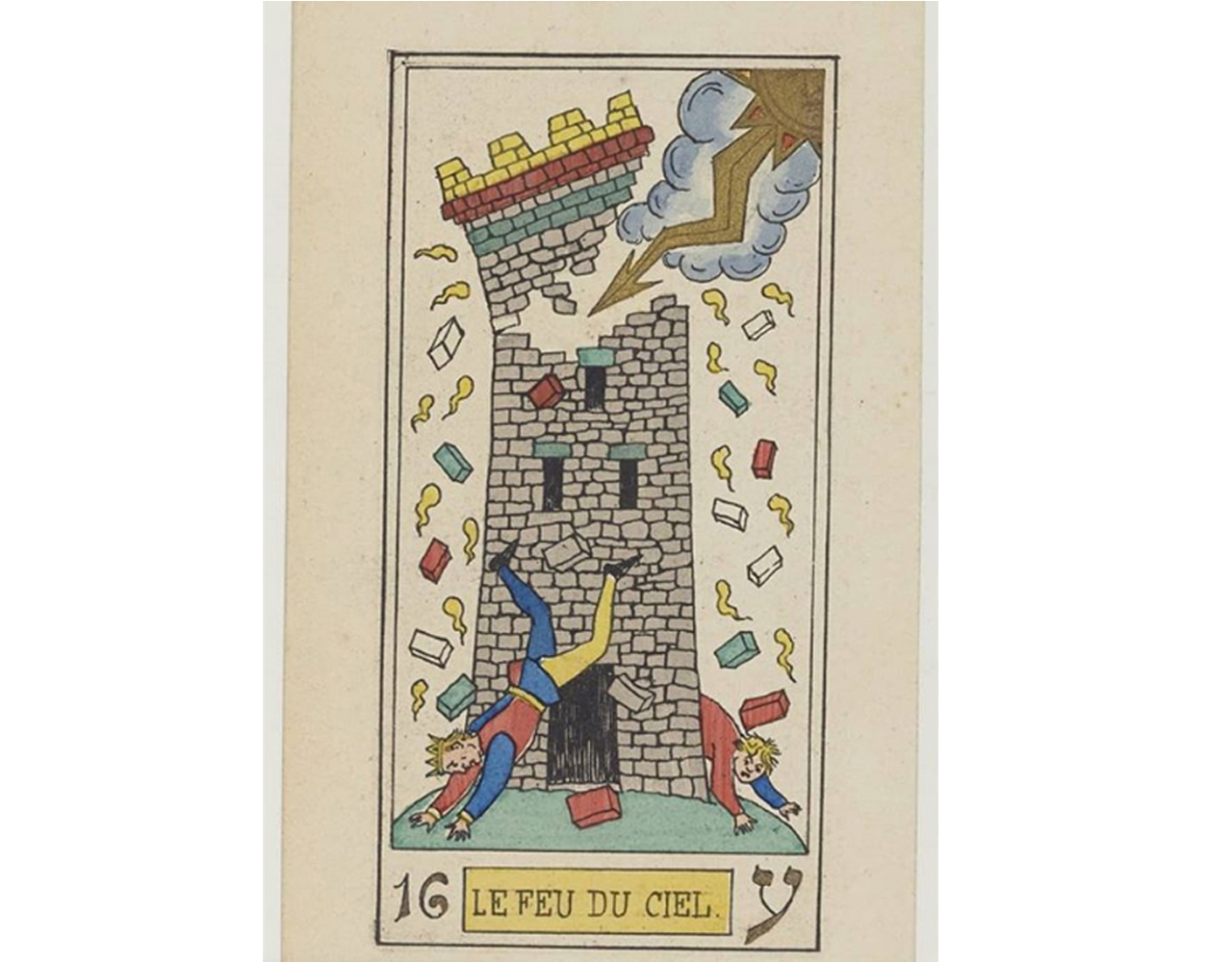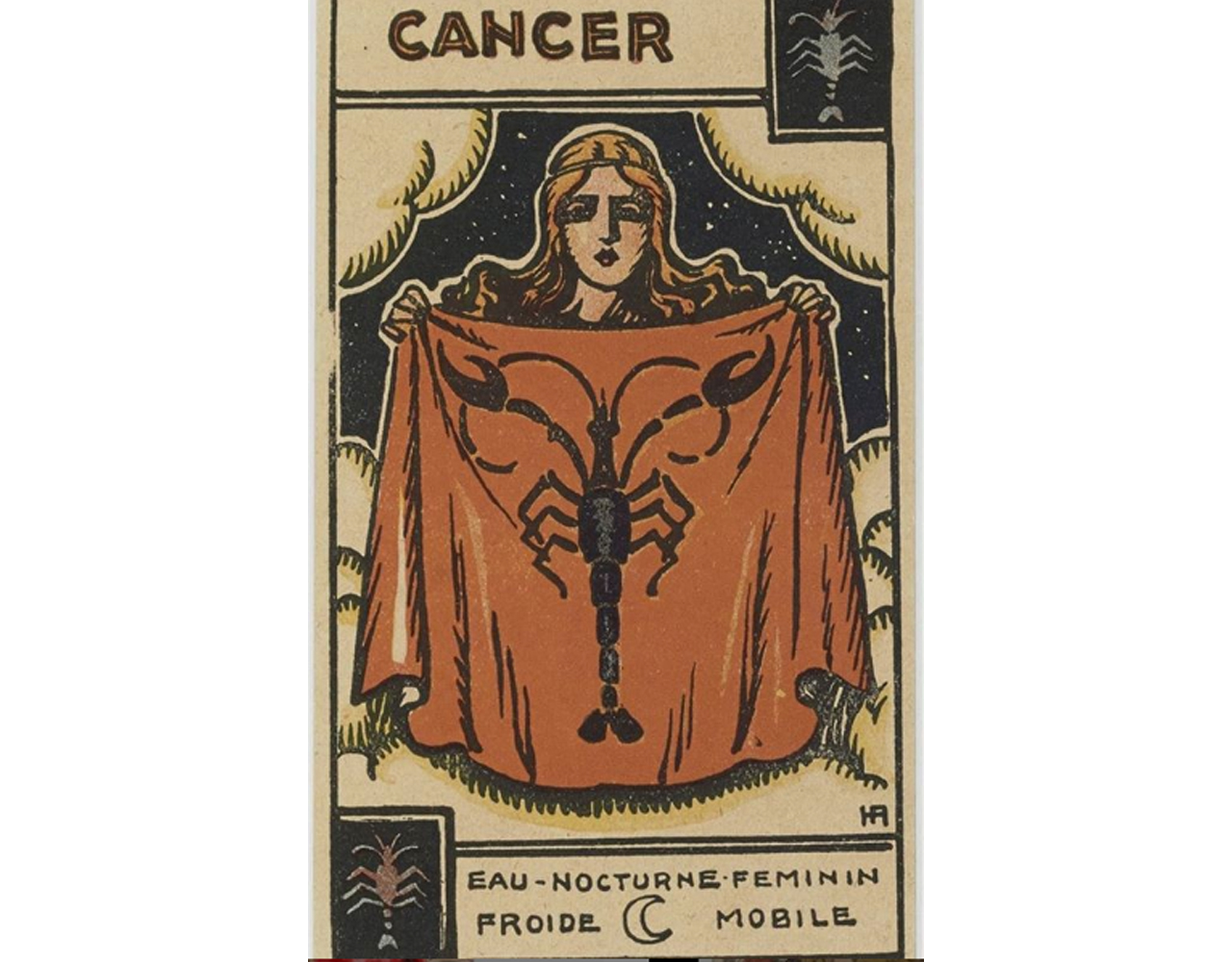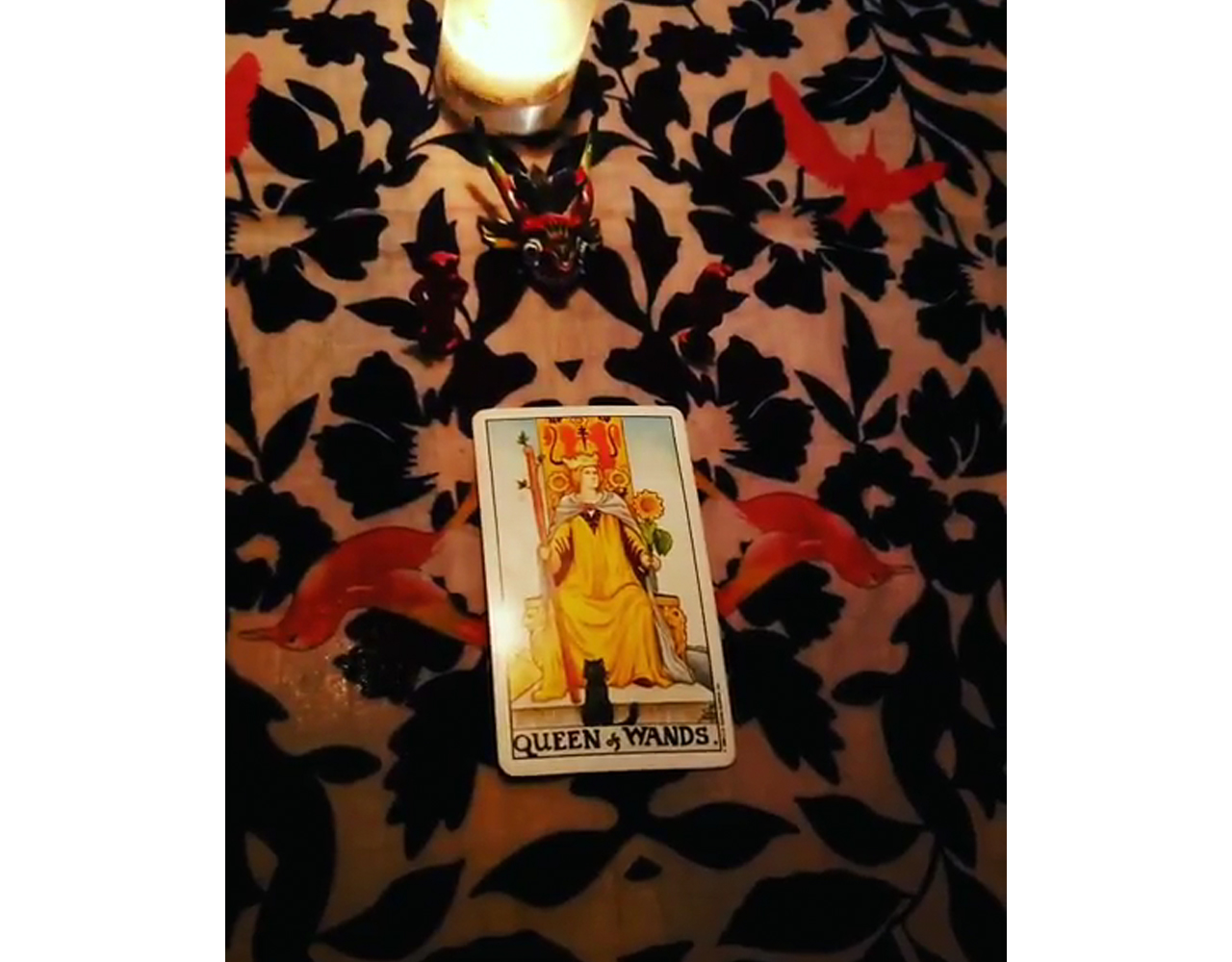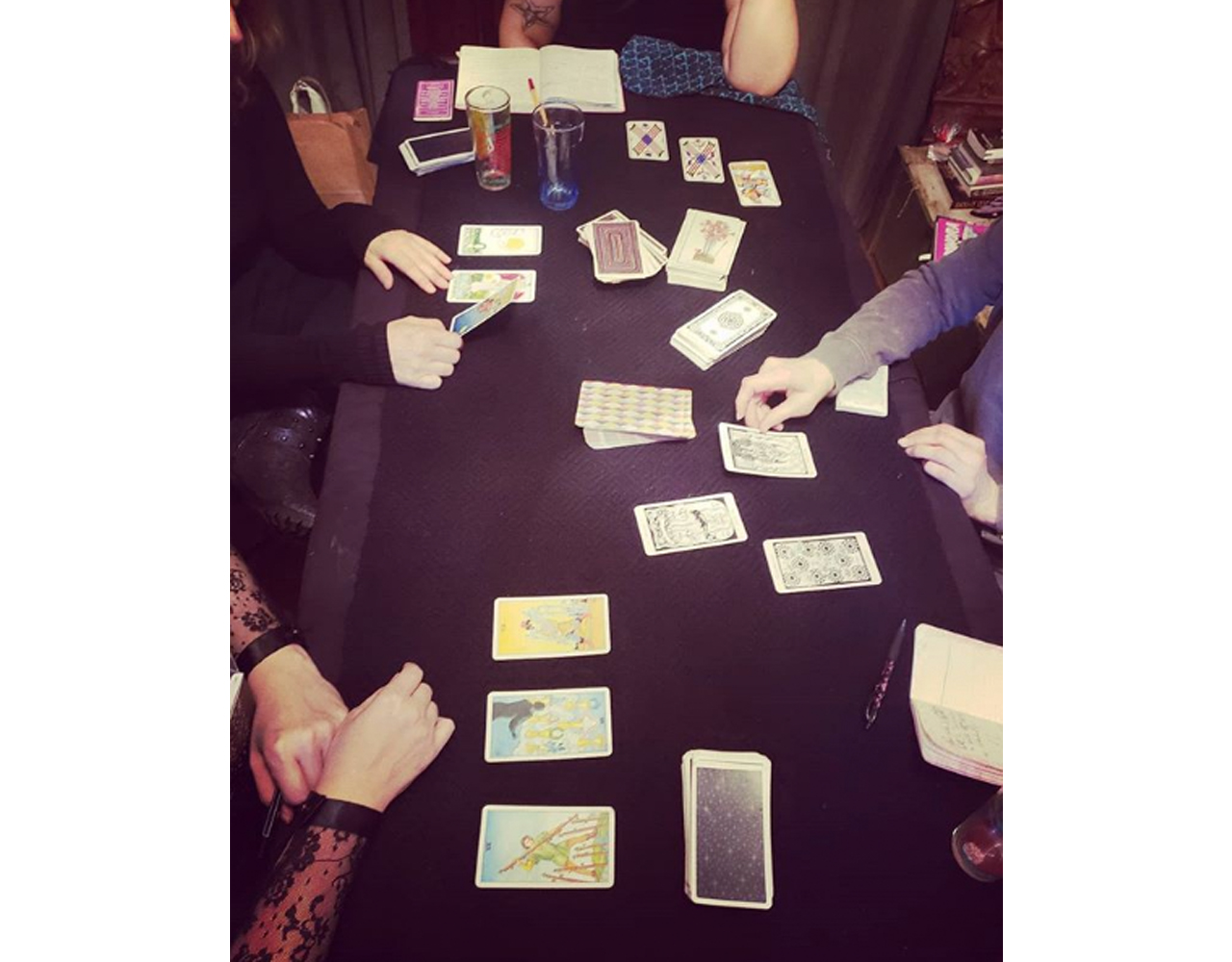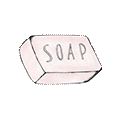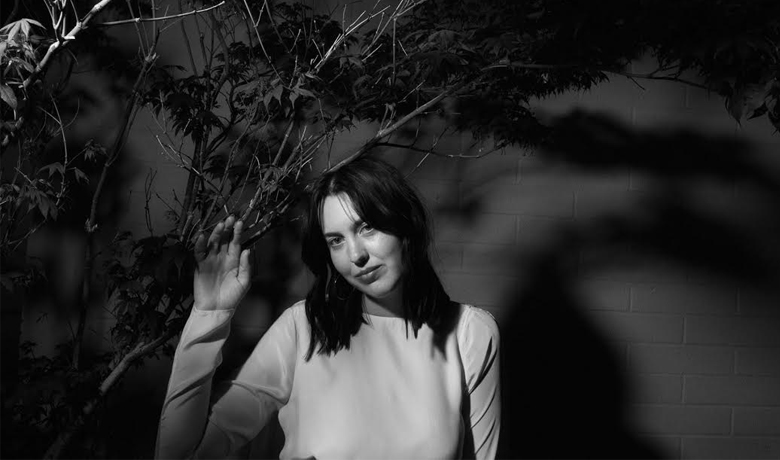#TheMysticIssue
Let's talk
A TALK WITH LAETITIA, PROFESSIONAL TAROT READER FROM NYC
// I come from a witch family and still today I ask my mother to read my tarots.
AN INTERVIEW BY AMANDA LUNA BALLERINI
In my family, a predominant female family where women always ruled over their men and had a so called “special sixth sense’” for anything magical, I find myself at the age of 23 not knowing much about card readings and though having been used since I was very little to have them present in my daily life.
I don’t know if it’s just nicer to have them read by someone else who feels “really knowing the stuff ” or if I was just to lazy to really learn, but what I’m sure about is that they are full of meaning and somewhat remain mysterious.
My grandma and mother, huge fans of the occult in any form (being both not so classically religious, if you know what I mean) educated me with stories of ghosts, intuitions, night dreams which always became true and seances which brought their dead beloved ones back to reality.
Scary, mysterious, deadly and always fascinating I felt part of this world since I was vert young and grow up feeling a little witch inside until today and hopefully everyday more.
I bumped into Laetitia through Instagram curiosity, fascinated about people from the new generation who made out of this a real profession based on tangibility.
I want to ask her so much about her path and the meaning of her job, that words seem quite unable to satisfy my desire to know.
I decide to ask Laetitia about her like a baby girl would do, and so starting from basics and phantasies, which then may turn in reality.
*
*
*
Amanda. Hi Laetitia, pleasure to e-meet you. How would you describe your job to a 8 years old little girl?
Laetitia. I’m almost like a doctor, but instead or curing people with medication treatments, I heal people by allowing them to play with beautiful images.
Amanda. What’s the oldest and first memory you have of approaching this universe ? (can we call it the Occult or is it the wrong term?)
Laetitia. I grew up in France so my cultural background is a bit different. In France, the Tarot de Marseille tradition is quite old and Tarot is easily available. I think my very first encounter with Tarot was on the radio. My mom used to listen to a mystical radio program in her car when she picked me up from school. Every afternoon, the presenters gave free Marseille readings to people calling the station. I was very young, maybe 6 or 7 years old, and the very enigmatic way they would describe the cards fascinated me. “The Tower Reversed” “ The Hangman” … I barely knew how to read books at the time, but I could picture these images very clearly in my head. Later on, when I was able to go home on my own, I found a Marseille deck at a tobacconist store who was also selling playings cards and parlour games. I was about 11. I still have some cards from that deck, it was a Grimaud from the 90’s.
Amanda. Can we think of card as an analytic psychological tool? People tend to think of astrology and card readings as curious and sometimes accurate tools, but today we see more and more how new generations take it much more seriously believing in its natural power.
Laetitia. There are as many ways to think of tarots as there are so many ways to see tarot readers. For me, it is definitely a way to excavate the unconscious and unveil what’s hidden from us. But then again, it’s a question of sensibility and some do amazing work using it as a divination tool.
Historically, C. G. Jung worked a bit on the tarot and addressed the many correspondences there are between the structure of the card deck and his theory of Individuation. Tarots allow us to dig deep, to manipulate symbols and archetype in a playful way.
Yet again, it’s only a just a tool, I think it’s our capacity to listen to the cards message and maybe our intention to integrate it that gives power to tarot practice.
Amanda. The word tarot and German Tarock derive from the Italian tarocchi, the origin of which is uncertain but taroch was used as a synonym for foolishness in the late 15th and early 16th centuries. Do you know that we still use the word tarocco in “vulgar” italian to indicate knockoffs or fake products (as well as for a specific type of orange…) ?
Laetitia. I don’t speak Italian unfortunately so I didn’t know about this. But it really resonate well the fact that tarot, in its history and its iconography dramatically oscillate between the Sacred and the Profane. Some cards, like le “Bateleur” ( The Magician in the RWS deck) speaks directly about this. Is he a street conjurer or is he a magus? He is both, he is a trickster and an initiator. Card games have often enjoyed a terrible reputations because they were associated with gambling, corruption and immoral entertainment. One can argue that’s probably why they could make a perfect vessel for hermetic knowledge, their initiation power being hidden in plain sight. I believe this is because of this magical paradox that tarot never stopped being popular, it’s both accessible and complex, mundane and transformative.
Amanda. Do you think it is true that tarots and the universe associated with it were born as “anti-clerical”?
Laetitia. The question can become easily unclear. Technically, the 15th Century Italian decks were commissioned by eminent families in a political context where the Clergy had immense power. Obviously these decks were not created for divination but the symbolic figures they carry are woven with biblical iconography. The “Judgement Card” is one of many great example.
Things are created for a reason and soon their usage will be subverted, that’s what happened with playing cards and tarot used for divination purposes.
There would be a lot to say about how the visual representations of Catholicism was used as a template to express hermetic knowledge. The best example might be Notre Dame de Paris, whose entrance portal showing Christ, the Apostles and many other characters illustrates the Great Work of the alchemists. Lines aren’t that clear between the Church and what we consider today as “occult”. A discipline such as Astrology wasn’t seen as an heresy because it was deciphering God’s plan in the heavens. Nostradamus, who was Catherine of Medicis’s astrologer is buried in a Church and there was no contradiction between his practices and his faith. We forgot all of this. As a french woman, raised in the catholic faith, I don’t see any contradiction between reclaiming certain practices of private devotion that are rooted in catholic folk magic and not accepting the authority of the Vatican. This is where I come from and I don’t feel untitled to borrow in other systems of beliefs. I think it’s a misconception to believe there is no room for magic. Miracles, the power of relics and the mystery of transubstantiation are, at list in my opinion, some very magical concepts to me.
Amanda. I am personally deeply fascinated from whatever the human develops to explain or ease our existences and I don’t see anything opposing something else but I see it more as many “healing tools” which work or may not work for a certain person. How did you understand and started to create your own path in this and made it a profession?
Laetitia. In 2015, I saw a Medium in Lily Dale, a Spiritualist community very close to Buffalo, NY who told me I should dust off my cards, read for people and I will get in touch with Spirits via automatic writings and journaling. At that time, I had been reading cards on and off, for myself and for friends but mostly for my practice and it had become more idiosyncratic and very private.
I was very flattered by the idea of the dormant tarot reader in me but really didn’t take it seriously, although I spent the rest of that summer digging for my old tarot related library.
Later on, my friend gifted me a reading with her stepmother, a professional reader. About a year after I believe she delivered to me the exact same message. The cards, the healing power, writing as a way to channel … so I did and it became a complete transformative experience. Not only it felt like reconnecting with an old friend but I also realised that all these things I’ve been doing very privately in years could actually help people redefine who they wanted to be, gave them hope and allow inner metamorphosis.
Amanda. I would be curious about a movie list from you.
Laetitia. “Invocation of my Demon Brother” by Kenneth Anger. I’m choosing only one because the list would be too long.
My background is in Art History and my first Master dissertation was on Anger’s film and their Thalamic Sources. It’s a talismanic film, a spell in moving images. Like tarot, it speaks about acknowledging our dark side, because nothing is just love and light. Even in positive cards like the Sun, there is a part of illusion and disenchantment.
Amanda. What helps you to feel grounded and connected in hard times?
Laetitia. I go to Mexico. It’s been my “happy place” for about 10 years. I go there every winter for about a month or more, when I can afford it. I loose myself in the cities I visit. There is a great Witchcraft market in Mexico City, Mercado de Sonora. I go there weekly to learn things. I learn how “cartas espanolas”, research native divination systems, who is this Saint or what is this amulet for. Walking and traveling have always been a big thing for me. Discovering and learning. Otherwise I read, armchair travel through time and space. I spend way too much time on Library database to find the overlook treasures they have in their collections. You won’t believe how many tarot decks library they have in their drawers!
Amanda. Your favourite character in history who according to you had a special connection to the supernatural.
Laetitia. Antonin Artaud, not an occultist per say, but he spend his life on the margin of rationality and his work hits me more than a lot of doctrinal texts any esoteric schools. Read his work on Heliogabalus, it’s soul stirring to say the least.
Amanda. Are you familiar with the work of Hilma AF Klint? Tell me some works of art I have to see to get into the occult vibe.
Laetitia. I am! We got blessed by her show at the Guggenheim. Her work is incredible and seeing it displayed along the spiral ramp of the Lloyd Wright building was magic. It felt like being in the Temple she imagined these paintings will be displayed in.
I recently read this great book about Pamela Colman Smith , the woman who illustrated the Rider Waite Smith Deck, mostly popular in the Anglo-Saxon tradition. We so easily take for granted the images she designed for the Tarot, we forget they are so much her vision. What a great pleasure to actually see the depth of her talent. She could convey such a complex story with such minimalism. No wonder this deck is one of the most used in the world.
*
*
*
Words by Amanda Luna Ballerini.
Images courtesy of Laetitia Cartomancy.
Meet Laetitia here!
